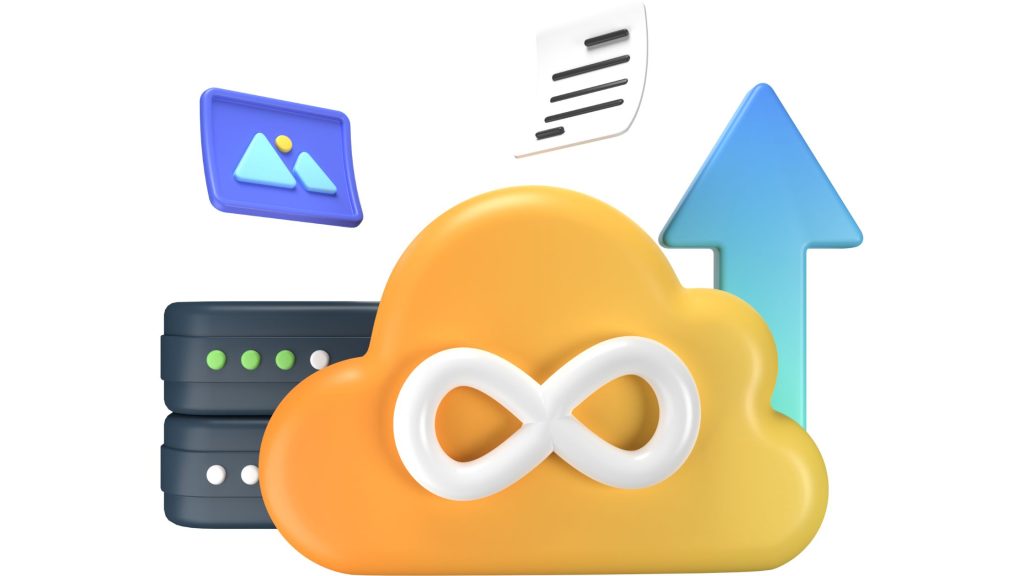Are you planning to buy cloud storage but wondering “how much cloud storage do I need?”. Should I go for 10 GB, 50 GB, 100 GB, maybe 1TB or more? Well, this is a more common question than you might think.
Cloud storage offers a secure and convenient solution to store files, documents, photos, and videos, without the need for physical storage devices. These services allow users to upload and access their data from any device with an internet connection, providing flexibility and mobility like never before. But the cost of cloud storage obviously varies based on the plan you choose. So, determining the right amount is crucial to avoid overpaying.
This blog post aims to assist you in determining how much cloud storage you really need based on your specific requirements. We’ll delve into factors to consider, steps to calculate your storage needs, and essential tips for choosing the right cloud storage plan.
Factors to Consider when Determining How Much Cloud Storage You Need

When assessing your cloud storage needs, several factors play a crucial role in arriving at an accurate estimate. Let’s explore each factor in more detail:
1. Types of Files You Need to Store
The types of files you intend to store significantly impact your storage requirements. Are they primarily documents, photos, videos, or a combination of different file formats? Different file types vary in size, and understanding your data composition will help you estimate your storage needs accurately.
For instance, a professional photographer may require significant storage space due to the large file sizes of high-resolution images. In contrast, a writer may have a collection of text-based documents that occupy significantly less space.
2. Size of the Files You Need to Store
The size of your files is a critical factor in determining your storage requirements. High-resolution images and videos, for instance, can quickly consume more storage compared to text-based documents. Make a list of your files and their respective sizes to make the calculation easier.
Let’s consider an example for a business user: The user needs to store various files, including documents, spreadsheets, presentations, and project files. The average file size for these types of files is 5 MB. If the user has 500 files, the total storage required would be 2.5 GB (500 * 5 MB).
3. How Often You Access the Files
The frequency of accessing your files impacts the amount of storage you may need. If you regularly access and modify documents or collaborate with others, you may require more storage space to accommodate frequent file updates.
Continuing with the business user example, if the user collaborates with a team and frequently accesses and edits project files, the storage requirements may increase further.
4. How Long Do You Need to Store the Files
Consider the retention period for your files. Are they short-term or long-term storage needs? Some cloud storage services offer storage plans based on subscription periods, and understanding your storage duration will help you select an appropriate plan.
In the business user scenario, if the files need to be retained for at least a year for reference and future projects, the storage requirements will need to account for this extended period.
How to Calculate How Much Cloud Storage Do I Need?
Now that we have explored the factors influencing your cloud storage needs, let’s delve into the steps to calculate the required storage accurately.
1. Estimate the Total Size of the Files You Need to Store
Add up the sizes of all the files you identified in the earlier step. Convert the file sizes to a common unit, such as gigabytes (GB) or terabytes (TB), for easier comparison.
For the business user example, the total size of the 500 files is 2.5 GB.
2. Add an Additional 20% to Account for Future Growth
Allow room for future growth and unexpected storage needs by adding approximately 20% to your total calculated storage. This buffer ensures you won’t run out of space if your data expands over time.
In the business user scenario, adding 20% to 2.5 GB gives us 3 GB. This additional buffer will accommodate any new files or projects that the user might undertake in the future. But don’t worry if you don’t get it right. Cloud storage services are usually scalable. That means you can add more storage and change to a bigger plan as your storage needs grow.
3. Choose a Cloud Storage Plan that Offers Enough Storage for Your Needs
Now that you have the estimated total storage requirements (3 GB), compare the available cloud storage plans from different providers. Select a plan that not only accommodates your current needs but also allows room for future expansion without incurring excessive costs.
For personal users, many cloud storage providers offer free plans with limited storage space. For instance, Megadisk offers 10GB free cloud storage for all users. These plans can be a good starting point if your storage needs are relatively modest.
However, if you are a heavy user with significant storage requirements, consider subscribing to a premium plan with larger storage capacities. These premium plans often come with additional features, enhanced security, and priority support.
Tips for Choosing a Cloud Storage Plan

Choosing the right cloud storage plan can be a crucial decision. Here are some tips to help you make an informed choice:
1. Consider the Features that are Important to You
Aside from storage capacity, look into other features offered by cloud storage providers, such as file encryption, version history, two-factor authentication, and file recovery options.
For instance, if data security is a top priority, opt for a cloud storage service
that offers robust encryption and data protection measures.
2. Compare Prices from Different Providers
Evaluate the pricing structures of different providers to find the best value for your storage needs. Some providers may offer competitive introductory offers or discounts for annual subscriptions.
Be mindful of hidden costs and overage charges, especially if you anticipate frequent data uploads or plan to exceed your storage quota.
3. Read Reviews of Different Providers
Before committing to a specific cloud storage service, read reviews from other users to gauge their experiences with the provider’s performance, reliability, and customer support.
Reviews and testimonials can offer valuable insights into the quality of service and user satisfaction.
Conclusion
Determining how much cloud storage you need involves understanding your data composition, file sizes, access frequency, and storage duration. By estimating your total storage requirements and factoring in future growth, you can select a suitable cloud storage plan that meets your needs.
Remember to consider additional features, compare prices, and read reviews to make an informed decision. Embrace the benefits of cloud storage, and enjoy the peace of mind that comes with securely storing and accessing your data whenever and wherever you need it.


